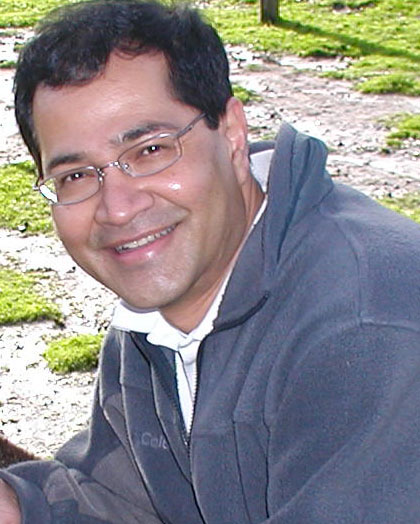Efforts under way at Virginia Tech to address deterioration of nation's water pipes

More than 2 million miles of the nation's infrastructure of water and wastewater pipes is nearing the end of its useful life, but the mostly underground facilities often do not attract much attention because of this "invisibility," said Sunil Sinha, Virginia Tech associate professor of civil and environmental engineering.
To help remedy this growing national concern, Sinha will be directing two new research projects to develop a National Pipeline Infrastructure Database. Information will be gathered on technologies to assess the condition as well as the location of the buried pipes, and on methods of how to repair, rehabilitate or replace them entirely. Sinha is conducting this research through the Virginia Tech Institute for Critical Technology and Applied Science Center of Excellence in Sustainable Water Infrastructure Management.
Sinha explained there are a vast number of different types of water and waste water pipes, and different technologies will be required to correct any problems.
“The proposed databases will be like a Wikipedia for the water and waste water utilities except users will not have editing privileges,” Sinha said. Instead, this database will be maintained and updated by Sustainable Water Infrastructure Management. It will provide the case studies, lists of vendors, consultants, and contractors on a regional basis that deal in a particular technology, and comments from end users about individual experiences with a particular technology.
“Presently, utility managers and decision makers are struggling with easy access to the comprehensive information about the technologies and experiences of other utilities in dealing with the different situations,” said Sinha, a National Science Foundation Career Award recipient in the area of sustainable water infrastructure management systems. “The proposed database will ensure a single point information center for the utilities where they can find all the relevant information that will help in expediting the decision making process for the selection of appropriate condition assessment and rehabilitation technologies.”
“Today, municipal governments are facing an infrastructure crisis requiring costly renewal beyond their capacity,” Sinha said. With the nation’s strained resources, utility managers need to make quick, informed decisions for implementing technologies that are proven to be effective and cost-effective.
According to the Environmental Protection Agency (EPA), U.S. water and wastewater infrastructure includes an estimated 16,000 wastewater and 52,000 drinking water utilities. System rehabilitation could “require a whopping investment of $390 billion and $274 billion respectively,” Sinha said.
In addition the utility engineers responsible for fixing the pipeline infrastructure are governed by various laws such as the Safe Drinking Water Act of 1974, the Clear Water Act of 1977, the Water Quality Act of 1987, American Society for Testing and Materials Standards, and other manuals, utility specifications, and trade association guidelines.
The Water Environmental Research Foundation awarded two grants, valued at about half a million dollars, to Sinha through the Environmental Protection Agency’s Aging Water Infrastructure Research Program, a research agenda that supports efforts to put the nation’s aging infrastructure on a pathway toward sustainability. The development of this research program stems from EPA’s Sustainable Water Infrastructure Initiative.
Sinha co-directs Sustainable Water Infrastructure Management with Marc Edwards, who holds Civil and Environmental Engineering’s Charles P. Lunsford Professorship, a National Science Foundation Presidential Faculty Fellowship, and a MacArthur Fellow award.
Sinha helped spearhead the PBS documentary “Liquid Assets: The Story of Our Water Infrastructure”, which recently aired on PBS affiliates across the country.
Stakeholders who might be interested in participating in this project should e-mail Sunil Sinha.




